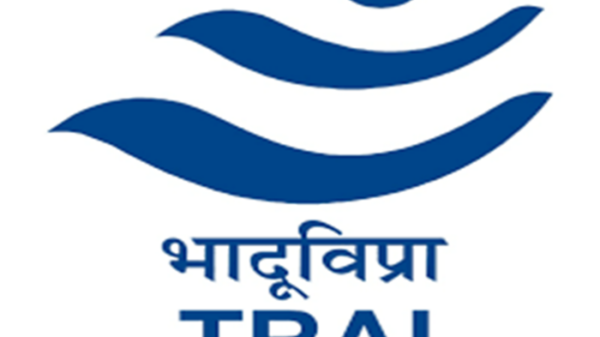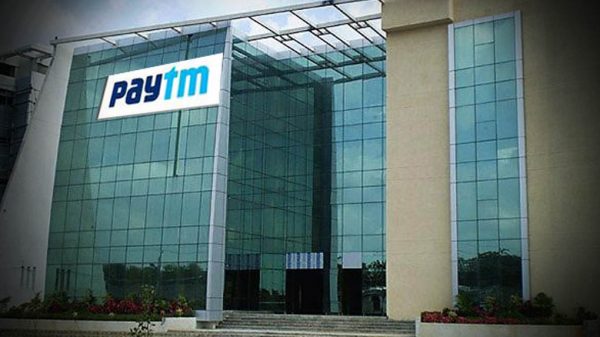by Geetha Hariharan
Disclaimer: India’s Draft Resolution was discussed during the meeting of the Ad Hoc Working Group on Internet-related Resolutions at the ITU Plenipot on the evening of November 1, 2014 (KST).After the discussion, India revised the text of the resolution, seeking to address concerns raised by ITU member states. The revised resolution may be found here. However, this blog post was written with reference to the original text of India’s Draft Resolution.
As I mentioned in my last post, India’s Draft Resolution on ‘ITU’s Role in Realising Secure Information Society’ raises security and equity concerns. The Draft Resolution has 3 security concerns: (i) security weaknesses in the network architecture that permit “camouflaging the identity of the originator of the communication” and make “tracing of communication difficult”; (ii) non-systematic, non-contiguous allocation of naming, numbering and addressing resources on the Internet, which makes it difficult to identify both the users and what states the IP addresses are located in; (iii) non-local routing and address resolution relating to traffic originating and terminating in the same country. Op. §§1, 3-7 seek to address these. It also identifies the present system of allocation of naming, numbering and addressing resources as inequitable, unfair, unjust and undemocratic (Op. §2 of the Draft Resolution offers a solution). I discussed some human rights implications of India’s Draft Resolution in my last post.
In this post, I explore the implications of the Draft Resolution for Internet governance and multi-stakeholder approaches (most notably, an equal footing model).[1] Given the uncertainties around defining multi-stakeholderism for Internet governance, this is rather ambitious. So I will try to point to concerns with certain textual interpretations of the Draft Resolution, map that against the positions India’s representatives have taken on Internet governance in the past, and the motivations/concerns that underlie the tabling of the Draft Resolution. This Resolution may not be the best way to allay India’s concerns, for there are technical and rights implications. But the concerns it raises are worth discussion and knowledge, and at forums where concerns are heard, acknowledged and discussed collectively. The text of the Draft Resolution and its attendant implications are not, then, the sole subjects of this post.
The Draft Resolution and Internet governance:
The text of the Draft Resolution is problematic. Many of its clauses may be seen as taking positions against multi-stakeholder approaches to Internet governance. Introducing such a resolution at the ITU may itself bring back memories of the controversies surrounding Resolution 3 of the World Conference on International Telecommunications (WCIT), 2012.[2] In 3 ways, the text of the Draft Resolution has indications for multi-stakeholder approaches.
First, the Draft Resolution frames issues primarily from the perspective security. In its preamble, the Draft Resolution makes several references to security threats posed by and on the Internet. For instance, it points to the ability of the network to “camouflage the identity of the originator of the communication” (Pream. §(e) [recognizing]), as well as national security concerns in the present-day system of routing Internet traffic through multiple countries (Pream. §§(f) and (g), [recognizing]). The apparent difficulty in tracing IP addresses, due to their random allocation, is another concern (Pream. §(h), [recognizing]). Among the “significant public policy issues” identified in telecom/ICT management, “security and safety of the Telecom/ICTs” is specifically noted (Pream. §(i) [considering]). In the Context note to the Draft Resolution and in several places in the Preamble, there are references to ITU Resolution 130 (‘Strengthening the role of ITU in building confidence and security in the use of information and communication technologies’) and ITU’s Cyber-security Agenda. Given the (legitimate or otherwise) disproportionate involvement of governments and not other stakeholders in matters of cyber-security, the framing of issues from a security perspective may lend itself to worries for multi-stakeholderism. Specifically, the Draft Resolution notes: “ensuring security of ICT networks is sovereign right of Member States” (Pream. §(b) [recognizing]).
Second, the Draft Resolution emphasizes the sovereign right of states to regulate and control telecom/ICT. It says, for instance, “it is the sovereign right of each state to regulate its telecommunication” (Pream. §(b) [considering]). With regard to the Internet, the Context note to the Draft Resolution (page 1) considers the Internet to be synonymous with telecom/ICTs: “the Telecom/ICTs, which in common lexicon is used interchangeably many times as Internet…”. Public telecom networks managed by telecom service providers, interconnected with other networks, are necessary for “proper functioning of a telecom network resources namely, among others, naming, numbering and addressing” (Pream. §(k) [considering]). It is worth noting that the sovereign authority of states over Internet public policy issues is settled text from §35 of the Tunis Agenda, though expressing it as synonymous with telecom may lead to possibilities of licensing and registration, which Bulgaria, for instance, does not do.
Third, the Draft Resolution identifies issues of equity and fairness in the allocation of Internet resources such as naming, numbering and addressing (Pream. §(g) [consdering], Op. §2). It states that to correct this inequity, “facilitation and collaboration among international, inter-governmental organizations and individual member states to ensure planning, implementation, monitoring and cooperation in its policies” is required (Pream. §(g) [considering]). In operative paragaphs, our Draft Resolution calls for collaboration with “all the concerned stakeholders including International and intergovernmental organizations to develop policies for allocation, assignment and management of IP resources including naming, numbering and addressing which is systematic, equitable, fair, just, democratic and transparent” (Op. §2). One may pay attention to the oversight over implementation and the necessity of inter-governmental involvement in planning and monitoring as problematic to iterations of multi-stakeholderism.
These concerns are valid and legitimate, and it is desirable that the text of the resolution be altered to address them. The text should also be altered to address the human rights concerns I point out in my previous post. But human rights enforcement or implementation is within the domain of states, though civil society may be a careful watchdog. The Draft Resolution’s text, most certainly, will face certain oppositions: for instance, that it is outside the scope and mandate of the ITU. That the ITU does not deal with content regulation – and this issue touches upon content – will be mentioned. That Internet governance is already being discussed and performed in multiple other multi-stakeholder fora, such as ICANN, the NRO and RIRs, IGF and WSIS, will be emphasized. That the Draft Resolution implicates national security concerns will be mentioned as well. But as an aside, on national security: under international law, states always mention their prerogative over national security, and so as a matter of international custom, national security is outside the scope of agreements unless expressly surrendered.
At the same time, debates around the role of ITU in Internet governance are not new, and those familiar will remember the ITU’s views right before the creation of ICANN (also see Mueller, Ruling the Root 145-48 (2002)), Resolution 3 of the WCIT, and the constant tug-of-war since then. The new Secretary-General of the ITU, Mr. Houlin Zhao, wrote a note in October 2004, before the Tunis phase of the WSIS, justifying ITU’s involvement in Internet governance, advocating that IPv6 address blocks be allocated to countries. Mr. Zhao describes, with specific examples, ITU’s role in the development and widespread growth of the Internet. He takes the examples of standards developed within the ITU and ITU’s policy role in liberalisation and spread of telecommunications (such as Articles 4 & 9 of the 1988 ITRs).
Mr. Zhao’s concrete proposals are rendered inapplicable by the creation of the NRO and RIRs, and the growth and entrenchment of ICANN. But it may be argued that his principled justifications for ITU involvement remain. It is these that India hopes to highlight, I was told, along with the inequities in resource allocation (IPv4 was spoken of), and the disproportionate weight some states enjoy in Internet governance. Her concerns are, I am told, also shared by some other states. Given that the text exhibits a less-than-friendly approach to multi-stakeholderism, India’s previous positions on the issue are of interest. While this would not correct the snags in the Draft Resolution’s text, allaying these concerns may be ideal to craft an inclusive and transparent multi-stakeholder model for Internet governance.
India and Multi-stakeholderism in Internet Governance:
India’s position on multi-stakeholder models for Internet governance is a matter of some obscurity. Statements at various forums exhibit a certain disagreement – or at the least, lack of engagement – among India’s ministries on our position on multi-stakeholder approaches, particularly the Ministry of External Affairs (MEA), the Department of Telecommunications (DOT) and the Department of Electronics and Information Technology (DeitY), both within the Ministry of Communications and Information Technology (MCIT). While both the MEA and DOT have been cautious supporters of a diluted form of multi-stakeholderism (they have repeatedly emphasized §35 of the Tunis Agenda), DeitY has been more open in entertaining multi-stakeholder approaches for Internet governance.
At the 66th session of UN General Assembly, Mr. Dushyant Singh, Member of India’s Parliament from the Bharatiya Janata Party, presented our proposal for a Committee on Internet-related Policies. The proposal sought the establishment of a UN committee comprising 50 member-states, with advisory groups including the private sector and civil society, to deal with Internet-related matters.[3] Though India was not opposed to multi-stakeholder advisories in its CIRP proposal, it was less than inviting in this regard.
At NETmundial (April 2014), the Indian government’s contribution document highlighted §35 of the Tunis Agenda, which delineates ‘roles and responsibilities’ of ‘respective stakeholders’ – i.e., governments (with whom reside “sovereign policy authority”), the private sector (technical and economic development of the Internet) and civil society (grassroots participation). At NETmundial, Mr. Vinay Kwatra of the MEA echoed this, also noting the lack of consensus on what multi-stakeholderism means for Internet governance (page 64).
Admittedly, this is a legitimate concern. Internet governance at various fora does not seem to have a clear answer on what multi-stakeholderism means. The debate was/is alive, for instance, at NETmundial 2014, the ICANN-convened IANA transition process, the World Economic Forum’s new NETmundial Initiative, and in the many callsand suggestions (pages 38-46) made over the years on strengthening the IGF (see also, Malcolm, Multi-stakeholder Governance and the IGF (2008), chapter 6). It is hardly surprising then, that India and other states raise this as a concern.
With regard to multi-stakeholderism, the DeitY in India has been the outlier. Speaking at the 2014 IGF in Istanbul, Mr. R.S. Sharma, Secretary (DeitY), expressed “no doubt that Internet Governance mechanism require the involvement of all the stakeholders, since the evolution of Internet has been a product of many different diverse groups working together in a loosely coordinated manner”, advocating strengthening of the IGF and pointing to India’s proposed India-IGF as an example of multi-stakeholderism at home. Most interestingly, Mr. Sharma did not focus on international Internet-related policies being the “sovereign policy authority of states”. Also in the transcripts of the four meetings of the Working Group on Enhanced Cooperation under the Committee for Science, Technology and Development (CSTD), I have been unable to find outright rejections of multi-stakeholder approaches, though India has not advocated multi-stakeholderism unequivocally either.
But this – the emphasis on “sovereign policy authority of states” in Internet governance – has been a consistent position for India, especially the MEA and DOT. Here at the ITU PP-14 as well, members of the Indian delegation also emphasized states’ sovereign monopoly over policy matters. “Why not take this to the ITU”, I was asked, as “many governments are uncomfortable” with the way Internet governance is being conducted at other fora. There are grave concerns, I was told, about the possibility of excessive control some governments have over both user and government data of other states (government-speak, of course, for the Snowden revelations).
These are, of course, concerns similar to those of authoritarian governments, or those reluctant to open up to multi-stakeholderism and looking for excuses to retain/increase government control. But it is equally possible that these concerns need not be limited only to such states. Perhaps for developing countries as well, these are real concerns. In conversation with members of the Indian delegation at the ITU Plenipot, I was able to discern 3 broad concerns. First, the definition of multi-stakeholderism in Internet governance. India has not shown herself comfortable with an all-out endorsement of multi-stakeholderism. This is troubling. Civil society and the private sector in India will attest to the difficulties in engaging with our government at all levels. For instance, seeking a place on India’s delegation for the Plenipot proved a disheartening exercise for some members of India’s civil society.
But there are also conflicting indications. India is in the process of instituting an India-IGF, and CIS’ Executive Director, Sunil Abraham, is on the MAG. India expressed agreement, at least in informal conversation, to opening up ITU documents to the public on grounds of public interest. The Law Commission of India recently conducted a multi-stakeholder consultation on media laws in India, and Telecom Regulatory Authority of India (TRAI) regularly conducts consultations, though the private sector is more active there. What is lacking in India, however, is a set of clear procedures and processes for multi-stakeholder engagement, particularly on Internet issues. Clear, public, accessible, foreseeable and predictable set of rules or processes on participation from civil society, private sector and academia would make a world of difference to multi-stakeholderism within India. But this lack should not blind states or other stakeholders to the genuineness of privacy/security or equity concerns – for instance, of the protection of our information from mass surveillance or the feasibility and actual participation of developing countries at many Internet governance fora.
Second, members of the delegation expressed concern over inequalities in the allocation of naming, numbering and addressing resources. While I am uncertain how IPv6 allocation falls within this concern, the inequalities of IPv4 allocations are well documented. To gather a sense of this, it would be useful to read chapter 5 of Professor DeNardis’ Protocol Politics, and to glance at Figure 5.7 (page 173). Africa controls, for instance, a mere 1% of all available IPv4 addresses, while North America and Europe control about 63%. A study on engagement from the Asia-Pacific in Internet standards organisations shows, for instance, greater participation from Western countries and from some states like Japan.[4] India and other states from Asia and Africa have lesser participation. Even at ICANN, with efforts to increase participation, meaningful engagement is still from a majority of Western countries. Perhaps states and other stakeholders on the other side of the table can address these concerns through clear, inclusive, non-discriminatory commitments and implementation.
Third, India emphasized how the Draft Resolution does not propose that ITU be involved in content management or resources control, but only seeks to systematize allocation by asking the ITU Secretary General to collaborate and coordinate with other Internet governance organisations to create a set of principles for fair, equitable, transparent and democratic – as well as secure – allocation of resources. ITU Resolution 101 already instructs the Secretary General to collaborate with relevant Internet governance organisations, and the Draft Resolution merely seeks to spell out his tasks. However, as I pointed out in my previous post, the text of the Draft Resolution is at odds with this intention of India’s. By dint of its drafting, it gravely implicates human rights, as well as touching upon resource allocation oversight (“needs to be adhere to” in Op. §2). To reflect the above stated intention, the Draft Resolution would need to be redrafted.
Finally, the text of the Draft Resolution exhibits, unfortunately, a certain disregard for existing network architecture and efficiency within the Internet, and to the principles of a free, open and inter-operable and unified Internet, when it seeks to develop a network architecture that facilitates (domestic) localization of traffic-routing, address resolution and allocation of naming, numbering and addressing. An argument may, of course, be made in favour of efficiency and costs, including reduced latency. But it is clear that this has the potential to increase domestic surveillance capabilities and government censorship of content. In any case, traffic localization (if not local address resolution) can be achieved without ITU coordination: through Internet Exchange Points, and through more efficient and better-negotiated peering and transit arrangements (pages 14-17). Internationally coordinated rules for localized traffic routing is not necessary; you just need to have a more efficient Internet Exchange Point. How to get more ISPs to interconnect through India’s National Internet Exchange (NIXI) is one of the very questions that India’s Telecom Regulatory Authority has taken up in its recent consultation on expanding broadband access (page 49). So it is possible that India’s concerns could be addressed without ITU involvement, though I am unsure of its impact on the global Internet.
The Draft Resolution will be discussed at the ITU Plenipot today. The discussion will allow India and sympathetic countries to raise several of their concerns relating to the present system of Internet governance, and the direction of its progress. I will report on these discussions upon their completion.
A Note on Limitations:
The aim of this post is to clarify. I would caution against its being the last word on anything, much less India’s positions on Internet governance. An issue as important as this needs far greater access to and confirmation from India’s government – and a more in-depth understanding of the politics – than I do, at the moment.
At the same time, India has not been a model for civil society engagement, as illustratively, the Narmada Bachao Andolan and/or P. Sainath’s evaluation of government policies in Everybody Loves a Good Drought reveal. It has been harder to effectively engage with India’s government than in many states in North America, Latin America and Europe. But I believe the complex dynamics of that is not unique to India. The NSA and GCHQ revelations (as an example of governmental trust deficit of unmatched proportions) have shown that where governments want to keep everyone out and oblivious, they do it well.
I am not in favour of a purely multilateral approach to Internet governance. But at the same time, I share concerns over definition and the evolution of processes as well, as I am sure others in civil society also do. Particularly on the issue of Internet governance and multi-stakeholderism, evidence reveals inconsistency among India’s various ministries. Until this is addressed by our government (hopefully in consultation with all concerned stakeholders), an open mind would probably be the best thing we – including states – could keep.
***
[1] For this post, I will use ‘multi-stakeholder approaches’ as an umbrella term, but would urge readers to keep in mind the many uncertainties and disagreements about defining multi-stakeholderism for Internet governance. These disagreements exist among and within all stakeholders, including government and civil society. In addition to various iterations of the ‘equal footing model’, the model proposed in §35 of the Tunis Agenda is also multi-stakeholder, albeit in a different – and for many in civil society, less desirable – sense.
[2] For those unacquainted with WCIT, see Mueller, ITU Phobia: Why WCIT was derailed, Internet Governance Blog (18 December 2012), http://www.internetgovernance.org/2012/12/18/itu-phobia-why-wcit-was-derailed/; Kleinwächter, WCIT and Internet governance: Harmless resolution or Trojan horse?, CircleID Blog (17 December 2012),http://www.circleid.com/posts/20121217_wcit_and_internet_governance_harmless_resolution_or_trojan_horse/.
[3] For a commentary, see Mueller, A United Nations Committee for Internet-related Policies? A Fair Assessment, Internet Governance Blog (29 October 2011), http://www.internetgovernance.org/2011/10/29/a-united-nations-committee-for-internet-related-policies-a-fair-assessment/.
[4] Contreras, Divergent Patterns of Engagement in Internet Standardization: Japan, Korea and China. I am unable to find this paper online. Please email me for information.




























